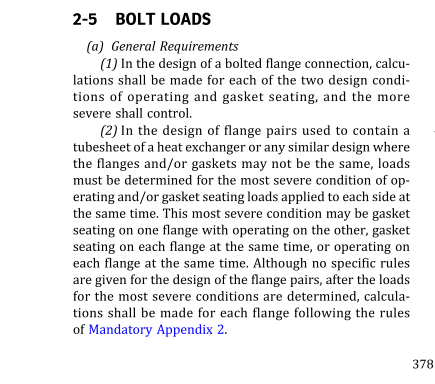Dear Experts,
I have to calculate bolt load of heat exchanger having 3 gaskets.
1 gasket between shell flange & tubesheet & other 2 are in between channel flange & tubesheet.
pl. see the attached detail indicating flange tubesheet configuartion & gaskets.
for circular gasket wm2 = 3.14*b*G*y
gasket has pass partition ribs.
1)While calculating bolt load as per appendix 2 of ASME sec VIII Div1, how to claulate wm2 for gasket having pass partition ribs?
2)whether for calculating total bolt load, Wm2 calculated for all 3 gaskets are to be added?
I have to calculate bolt load of heat exchanger having 3 gaskets.
1 gasket between shell flange & tubesheet & other 2 are in between channel flange & tubesheet.
pl. see the attached detail indicating flange tubesheet configuartion & gaskets.
for circular gasket wm2 = 3.14*b*G*y
gasket has pass partition ribs.
1)While calculating bolt load as per appendix 2 of ASME sec VIII Div1, how to claulate wm2 for gasket having pass partition ribs?
2)whether for calculating total bolt load, Wm2 calculated for all 3 gaskets are to be added?

